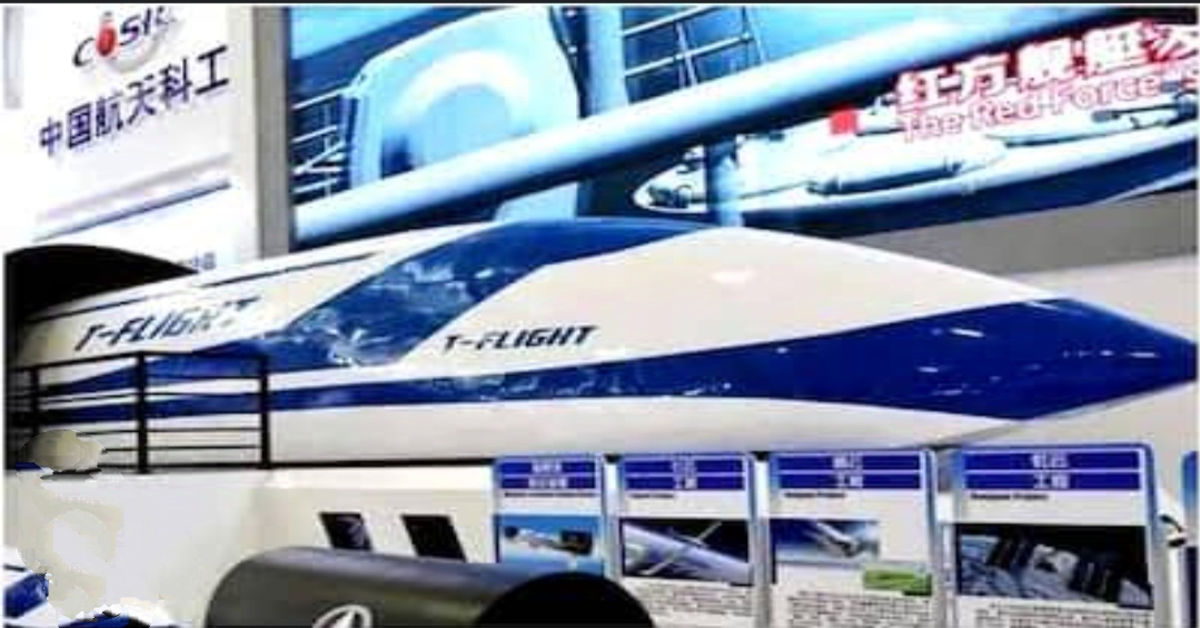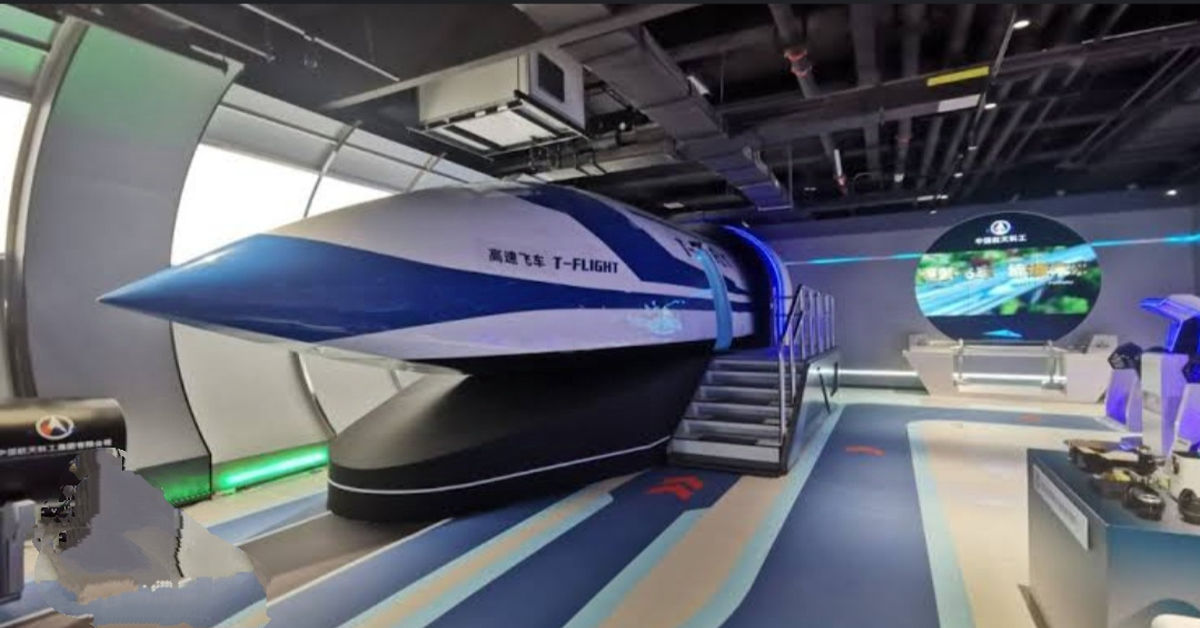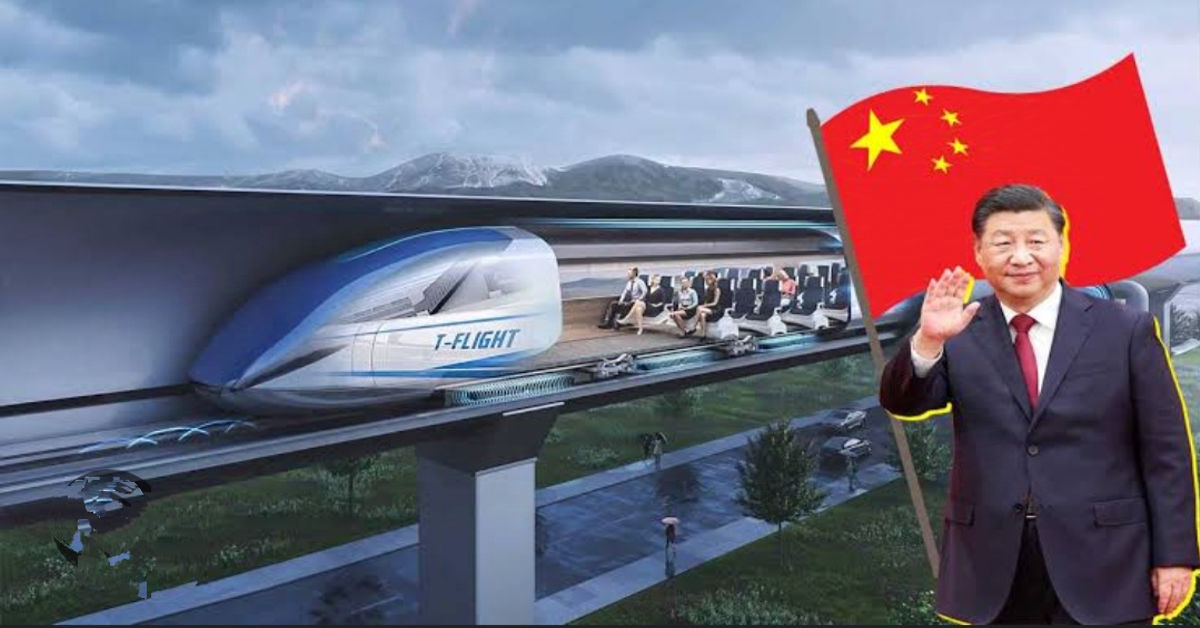Table of Contents
ToggleChina Going Crazy! The Floating Train Revolution That Could Outpace Commercial Aircraft.
In a world that is continuously evolving through advancements in technology and innovation, China has once again captured the global imagination with an ambitious and seemingly out-of-this-world transportation project: a “floating train” capable of reaching speeds of up to 1,000 km/h. This groundbreaking project promises to radically change the way people think about travel and may redefine transportation as we know it. The idea of a train that floats above the ground and exceeds the speeds of a commercial passenger aircraft might sound like something out of a science fiction novel, but China is moving full steam ahead with the development of this ultra-fast, futuristic form of transportation.
The “floating train,” often referred to as a “maglev” (magnetic levitation) train, is poised to revolutionize travel by achieving unprecedented speeds while remaining environmentally friendly and efficient. At the heart of this project is China’s commitment to leading the world in transportation technology, and its ambitious goal to create a faster, more sustainable, and efficient way of moving people over long distances. With the ability to travel at speeds higher than most commercial airplanes, the floating train is set to challenge the status quo of both air and rail travel, marking a bold step into a future where traditional transportation limitations are a thing of the past.

The Science Behind the Floating Train
The concept of a floating train is rooted in the principles of magnetic levitation, or maglev, technology. Maglev trains are not the same as traditional trains, which rely on wheels and rails for movement. Instead, maglev trains float above the track using powerful magnets that generate a magnetic field strong enough to lift the train off the ground. Once airborne, the train uses a second set of magnets to propel itself forward, essentially “pushing” it along the track at high speeds.
The key to maglev technology is its ability to eliminate friction. Traditional trains face significant friction due to the contact between the train’s wheels and the tracks, which slows them down and limits their speed. Maglev trains, however, float above the track, minimizing friction and allowing for smoother, faster travel. This frictionless movement is what enables maglev trains to achieve speeds far beyond those of conventional trains.
China has been at the forefront of maglev technology for many years, having already developed several successful maglev train systems, including the Shanghai Maglev Train, which operates at speeds of around 431 km/h. However, the floating train that China is working on promises to push the boundaries of this technology even further, aiming for speeds of up to 1,000 km/h, which is faster than the cruising speed of most commercial passenger aircraft, such as the Boeing 747, which travels at about 900 km/h.
To achieve these speeds, the floating train will need to overcome several significant technical challenges. One of the key obstacles is ensuring the stability and safety of the train as it reaches such high velocities. To maintain stability, the design of the train must account for factors such as air resistance, vibration, and the effects of high-speed travel on passengers. Additionally, the train will need to be able to operate at such speeds over long distances without excessive wear and tear on the infrastructure.
Why China Is Pursuing This Ambitious Project
China’s push to develop the floating train is driven by several key factors, including the country’s desire to lead the world in transportation technology, its commitment to addressing the growing demand for fast, efficient transportation, and its focus on sustainability. The floating train, with its potential to reach speeds of 1,000 km/h, could fundamentally change the way people travel within the country and across regions.
One of the main motivations for developing such a high-speed mode of transportation is to alleviate the pressure on China’s existing transportation systems. The country’s rapidly growing population and increasing urbanization have put significant strain on traditional modes of transport, such as trains and planes. While China already boasts an extensive high-speed rail network, the floating train represents a next-level solution that could further reduce travel times and make long-distance travel more accessible.
Moreover, China’s commitment to reducing its carbon footprint and transitioning to more sustainable transportation methods is another driving force behind the floating train project. The transportation sector is one of the largest contributors to global carbon emissions, and China, as the world’s largest emitter, is taking significant steps to mitigate its impact on the environment. Unlike traditional aircraft, which rely on fossil fuels, maglev trains run on electricity and do not emit harmful gases into the atmosphere. This makes the floating train a potentially game-changing innovation in China’s ongoing efforts to reduce pollution and combat climate change.
Finally, China’s desire to establish itself as a global leader in cutting-edge technology plays a crucial role in the development of the floating train. Over the past few decades, China has made massive investments in infrastructure, science, and technology, positioning itself as a world leader in a variety of fields. By developing a train that can travel faster than an airplane, China is looking to cement its place at the forefront of the global transportation revolution.

Read this post also : Mahindra to rename its EV to BE 6′
What This Could Mean for Travel and Transportation
The floating train has the potential to revolutionize not just China’s transportation system, but global travel as a whole. If the project is successful and the floating train can reach its projected speeds, it could change the way people think about travel, opening up new possibilities for how people move from one place to another.
One of the most significant impacts of the floating train will be the reduction in travel times. Currently, air travel is the fastest method for long-distance journeys, but even the fastest commercial flights take several hours to reach distant destinations. A floating train that can travel at speeds of 1,000 km/h would dramatically reduce the time it takes to travel between cities and regions. For example, a journey that currently takes several hours by plane could potentially be completed in less than an hour on the floating train.
This reduction in travel times could have a profound impact on the global economy, making it easier for people to conduct business, attend meetings, and travel for leisure. Cities and regions that were previously separated by significant distances could become more interconnected, leading to increased economic activity and collaboration. For China, this could mean stronger ties between its major urban centers, as well as greater integration with neighboring countries and international trade routes.
The floating train also has the potential to reshape the airline industry. If the train becomes a viable alternative to air travel for certain routes, it could reduce the demand for short-haul flights, which are currently a significant part of the airline industry’s business model. This could lead to a shift in the way airlines operate, with a greater focus on long-haul flights and an increasing reliance on environmentally friendly technologies.
Furthermore, the environmental benefits of the floating train cannot be overstated. As global awareness of climate change and environmental degradation grows, there is increasing pressure on the transportation sector to adopt cleaner, more sustainable alternatives. Maglev trains, particularly those that run on renewable energy sources, offer a promising solution to this challenge. With no reliance on fossil fuels and the potential to be powered by solar, wind, or hydroelectric energy, the floating train could represent a significant step forward in achieving global sustainability goals.
Challenges Ahead: Technical, Economic, and Social Hurdles
Despite the promising potential of the floating train, there are still numerous challenges that must be addressed before this technology can become a reality. The first and most obvious hurdle is the technical challenges involved in developing a train that can reach speeds of 1,000 km/h while maintaining safety, stability, and comfort for passengers. This requires significant advancements in materials science, aerodynamics, and engineering.
The economic feasibility of the floating train is another important consideration. While the development of maglev technology has already been demonstrated on smaller scales, scaling it up to such high speeds over long distances will require massive investment in infrastructure. The construction of the tracks, stations, and other necessary facilities will be costly and time-consuming, and it remains to be seen whether the benefits of the floating train will justify the expense.
Finally, there are social and cultural factors to consider. People are accustomed to traditional modes of transportation, and the introduction of such a radically new system may take time to gain public acceptance. Additionally, the floating train’s success will depend on its ability to operate efficiently, reliably, and affordably for passengers.

Conclusion: A Bold Step Toward the Future
China’s ambition to develop a floating train capable of speeds up to 1,000 km/h is nothing short of revolutionary. The project represents a giant leap forward in transportation technology and is a testament to China’s commitment to innovation, sustainability, and global leadership. If successful, the floating train could change the way people travel, reduce carbon emissions, and pave the way for a future where transportation is faster, cleaner, and more efficient than ever before.
While the challenges are significant, China’s track record in technological development and infrastructure projects suggests that it is more than capable of overcoming the obstacles ahead. Whether or not the floating train becomes a reality in the near future remains to be seen, but one thing is clear: China is going crazy with ambition, and the world is watching closely to see how it unfolds.

Esentepe su kaçak tespiti Fatih’teki ofisimizdeki su kaçağını hemen tespit ettiler ve onardılar. Harika bir hizmet. http://nochill.tv/author/kacak/
termal kamerayla su kaçak bulma Su faturamız aniden yükselmişti. Gelen ekip yeraltındaki borudaki çatlağı buldu. Bahçeyi kazmadan tamir ettiler. Fatma Ş. https://techbasis.com/author/kacak/
[…] Also Read this post : China Going Crazy! The Floating Train Revolution That Could Outpace Commercial Aircraft […]